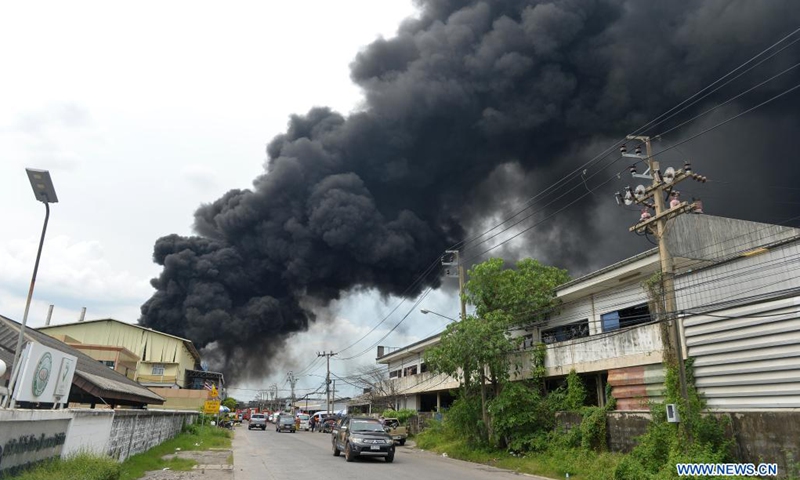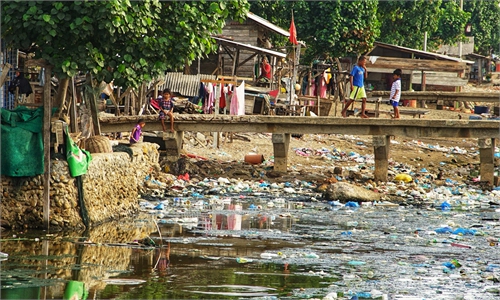
Photo taken on July 5, 2021 shows a blast site in a chemical factory in Samut Prakan, Thailand. An explosion and the ensuing fire killed one people and injured about 30 others in a chemical factory near the Thai capital Bangkok on Monday. The explosion rocked the plastic foam-producing factory at around 3:00 a.m. local time in Bang Phli district of Samut Prakan province and caused a massive fire, local media reported.(Photo: Xinhua)
Remnants of industrial chemicals in the air can potentially transform into new substances more toxic and persistent than the original pollution, according to a global study published on Wednesday.
Using samples gathered around the world, the study published in Nature found that these previously unidentified products are present in the atmospheres of 18 big cities including Lagos, New York, Tokyo and Warsaw.
Regulatory guidelines including those listed in the Stockholm Convention assess the danger of different chemical pollutants based on how long they remain in the environment, how toxic they are and to what degree they contaminate living things.
But, the study notes, this approach has been limited to a list of known substances and does not take into account how they may change as they break down.
The research proposes a new framework using laboratory tests and computer simulation to predict what chemicals will arise as products interact with the air and how toxic they will be.
Study main author John Liggio, a research scientist for Environment Canada, worked with a team to test the framework on nine flame-retardant chemicals most commonly found in the atmosphere.
"They are chemicals that are added to a large variety of materials to delay the onset of fire," Liggio told AFP.
In a laboratory, they observed how these chemicals changed over time when in contact with oxidants in the air and found that they gave rise to 186 different substances.

